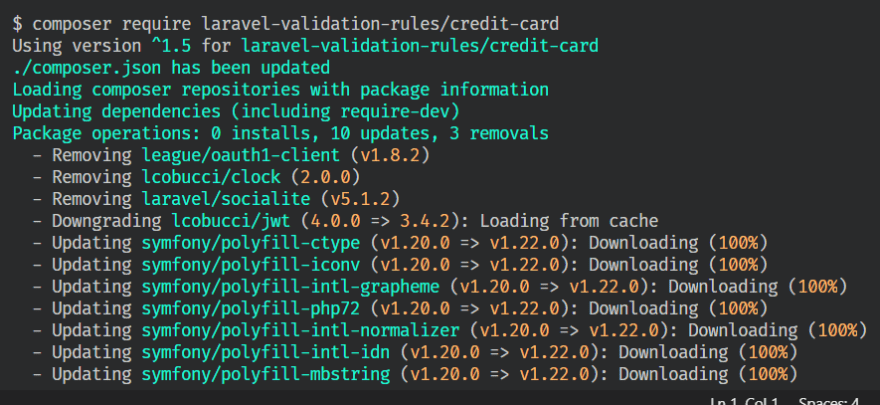Step 1: Install the package required
We are going to be using a package Laravel Validator Rules - Credit Card, so we need to install it
composer require laravel-validation-rules/credit-card
Step 2: Create the Form Request
For a comprehensive explanation of this step, check out this material Laravel Form Validation
php artisan make:request CardVerificationRequest
Step 3: Write the Form Request Rules and Error Message
Open the file that is created in app/Http/Requests/, CardVerificationRequest.php and edit to this
<?php
namespace App\Http\Requests;
use LVR\CreditCard\CardCvc;
use LVR\CreditCard\CardNumber;
use LVR\CreditCard\CardExpirationYear;
use LVR\CreditCard\CardExpirationMonth;
use Illuminate\Foundation\Http\FormRequest;
class CardVerificationRequest extends FormRequest
{
/**
* Determine if the user is authorized to make this request.
*
* @return bool
*/
public function authorize()
{
return true;
}
/**
* Get the validation rules that apply to the request.
*
* @return array
*/
public function rules()
{
return [
'card_number' => ['required', 'unique:cards,cardNo', new CardNumber],
'expiration_year' => ['required', new CardExpirationYear($this->get('expiration_month'))],
'expiration_month' => ['required', new CardExpirationMonth($this->get('expiration_year'))],
'cvc' => ['required', new CardCvc($this->get('card_number'))]
];
}
public function messages()
{
return [
'card_number.required' => 'The card number is compulsory'
];
}
}
Step 4: Type-hint the CardVerificationRequest in our Controller
Go to the controller method, where you want to use the validation and use my code as a guide
/**
* Store a newly created resource in storage.
*
* @param \App\Http\Requests\CardVerificationRequest $request
* @return \Illuminate\Http\Response
*/
public function store(CardVerificationRequest $request)
{
$validatedData = $request->validated();
$newCard = new Card;
$newCard->cardNo = $validatedData["card_number"];
$newCard->cardExpiringMonth = $validatedData["expiration_month"];
$newCard->cardExpiringYear = $validatedData["expiration_year"];
$newCard->cardCVV = $validatedData["cvc"];
$newCard->save();
return response()->json([
"status" => "success",
"message" => "Card saved successfully.",
"data" => $newCard
], StatusCodes::SUCCESS);
}
Testing
Running the app with fields that violates the rules
When the fields are correct
Follow me for more of my articles, you can leave comments, suggestions, and reactions.
I am open to any vacancy as a PHP (Laravel) backend engineer, I am also available for any job.











